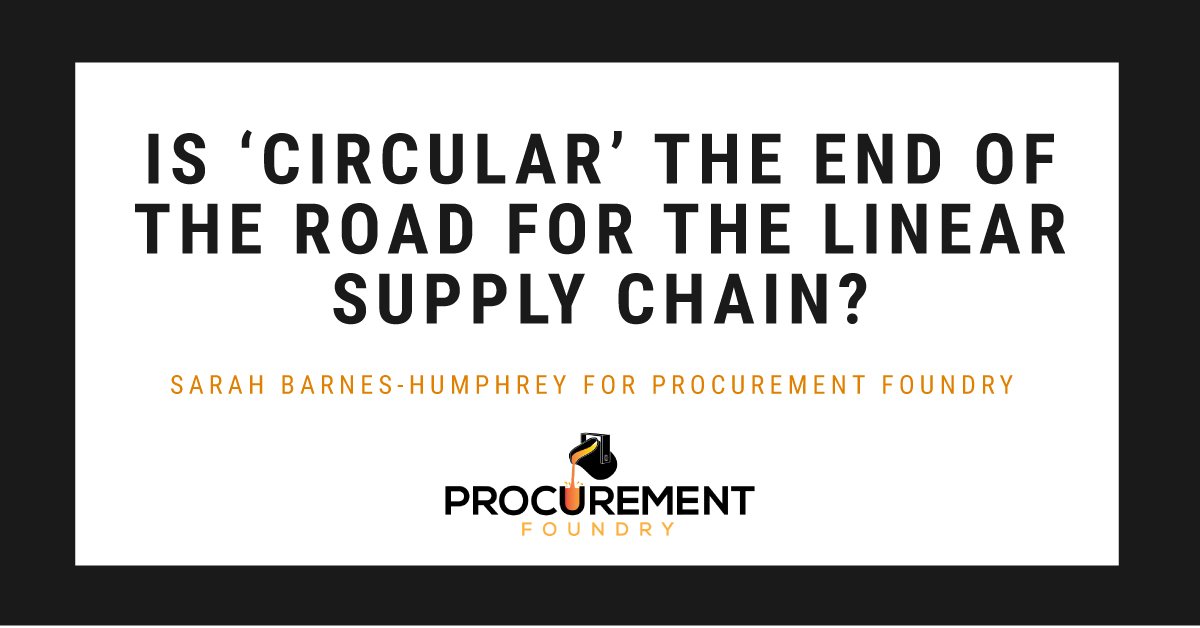Maximizing Savings Opportunities and Procurement's Strategic Value for CPOs
Saving money is not always about pinching pennies: advanced and data-driven insights enable you to identify real cost-saving opportunities, negotiate...
2 min read
![]() Sarah Barnes-Humphrey
:
3/26/20 6:10 AM
Sarah Barnes-Humphrey
:
3/26/20 6:10 AM

Just when we have finally mastered the end-to-end visibility and collaborative capabilities necessary to maximize the performance of a linear supply chain, the rules seem to be changing.
Those who have been in our profession for some time will readily understand the long and winding road we have taken to develop sequential supply chain competencies. We have faced challenges with transparency and learned to manage interruptions in product flow due to weather phenomena, labor strife, and geopolitical instability. Our lessons learned are the scars of battles fought and won.
Even from an organizational standpoint, we have addressed the need to corral varied (and at times divisive) views of procurement into a singular and cohesive practice.
Regardless of the conflicting and varied issues with which we had to deal in the past, we were all for the most part heading in one direction on the same road. This “single road”, or supply chain, refers to the progression from raw materials to manufacturing to the consumer to the trash. On this route, there was a clear starting point and a definitive endpoint.
Enter the circular supply chain.
Let’s pause for a moment to ponder whether the world is flat or round.
It may sound like a strange question, but it is probably one of the most effective illustrations of our move from the familiar linear supply chain to the emerging notion of a perpetually circular supply chain.
In the long-ago past, people believed that the world was flat and that if you traveled far enough towards the horizon, the road would end, and you would fall into an eternal abyss of nothingness. Our adherence to the concept of a one-direction, “linear” chain of supply is equally outdated.
Now consider the fact that the world is round – which it is. In this round or “circular” world, there are innumerable, routes and points of connection between any two places. The difference in this circular perspective is that in traveling the same or different routes, you will likely find yourself revisiting both new places as well as the same places more than once.
Which scenario above reflects a truer picture of reality?
At this point, some of you may be wondering what a “circular” supply chain is.
One of the best examples is Netflix’s streaming subscription plans.
Think of purchasing a DVD to watch a movie – our linear supply chain example. The movie was filmed, turned into a DVD, and packaged for sale through a retailer. It was then sold to the consumer. When it was old, undesired, or damaged, it was thrown away. At each stage, a single entity touched the product once, and the transaction ended. It was a done deal.
With Netflix streaming, there are no DVDs to manufacture or sell. There is only streaming content. Through an endless series of loops, i.e., views, the “product” is “consumed” again and again and again. There is no end. More importantly, there is no waste.
This reuse cycle is at the heart of a circular supply chain.
As circular principles change the landscape and expectations for our supply chains, we will have to re-learn many of the lessons of the past, only now we will learn them moving in any number of directions, as opposed to just moving forward towards the end of the earth.

Saving money is not always about pinching pennies: advanced and data-driven insights enable you to identify real cost-saving opportunities, negotiate...

The topic of our recent roundtable discussion with a dozen Procurement Foundry community members—exploring potential flaws in procurement incentive...

Every 30 days or so, I get the same alert on my phone—“Your electricity bill is available for viewing.” I take a quick look, make sure nothing seems...